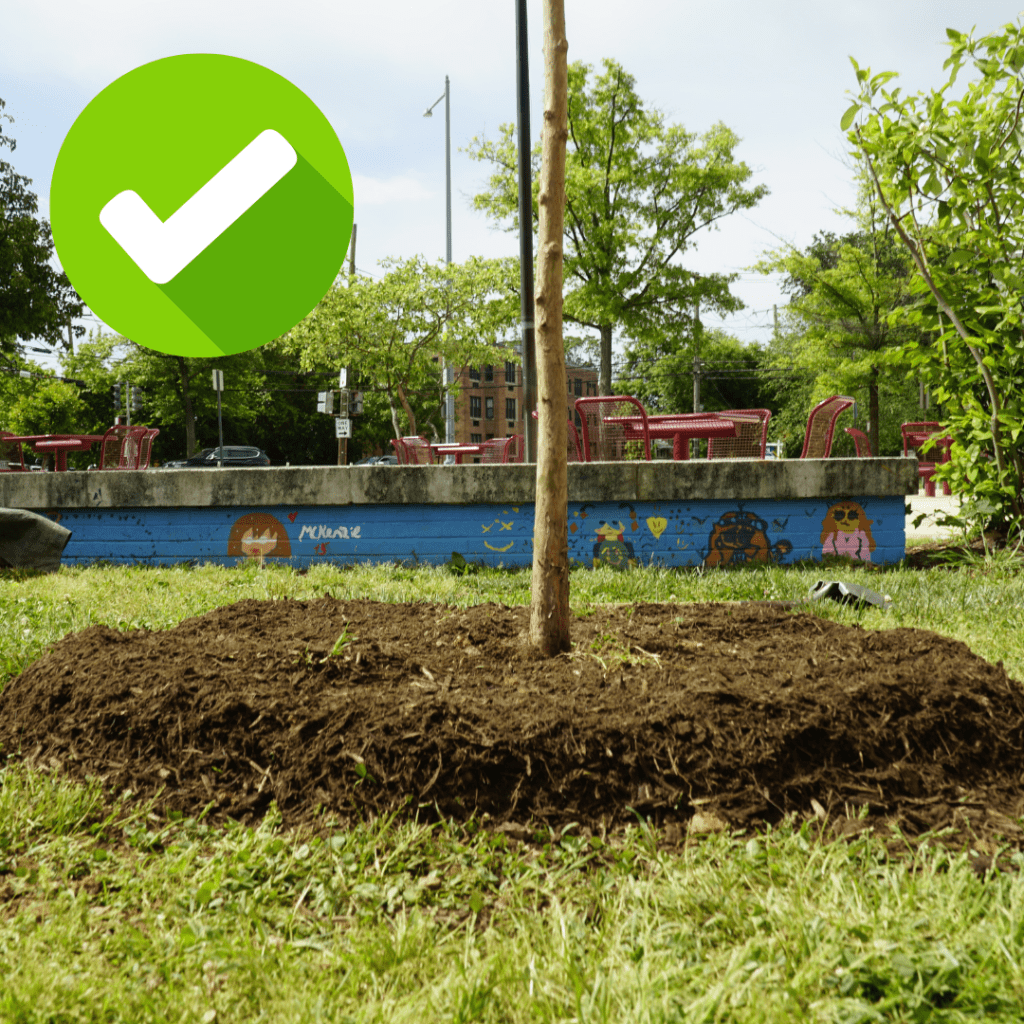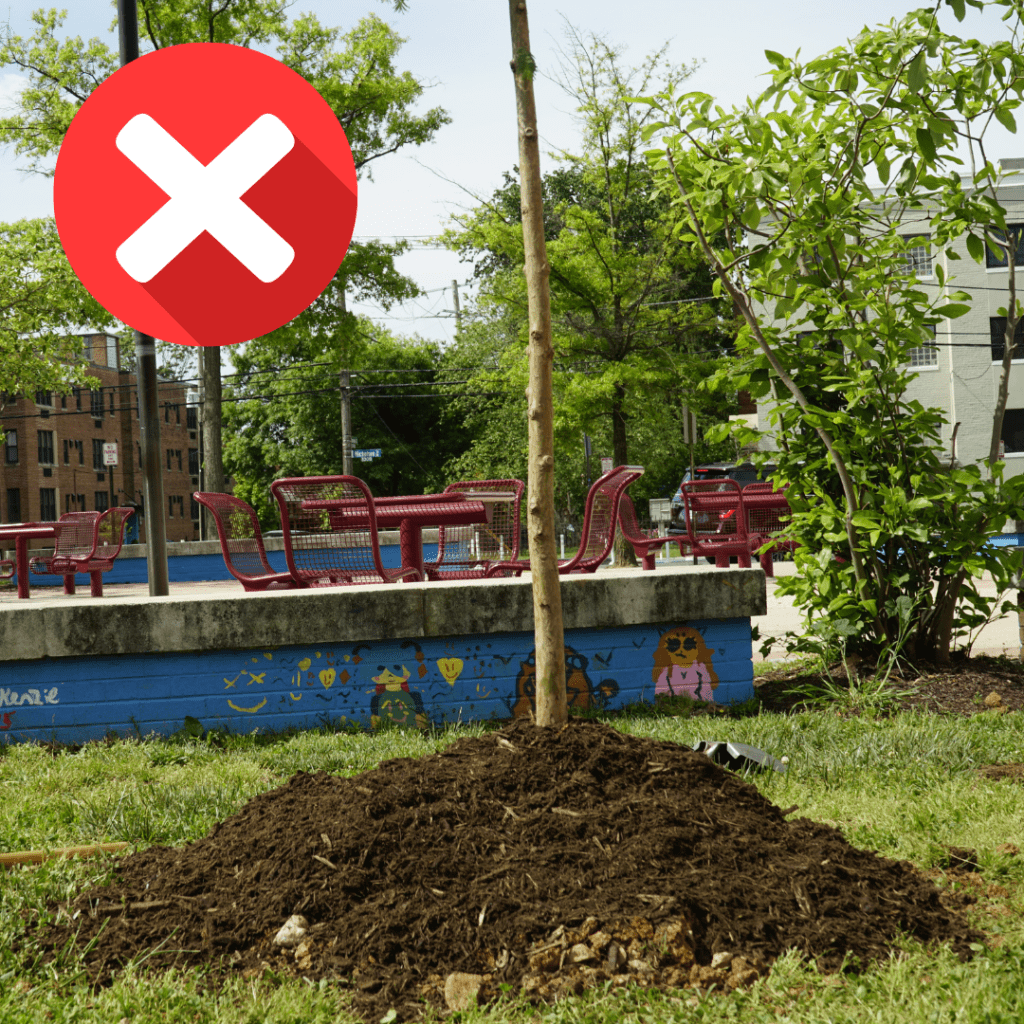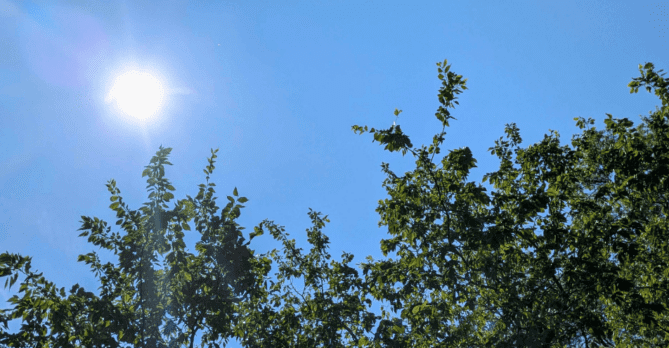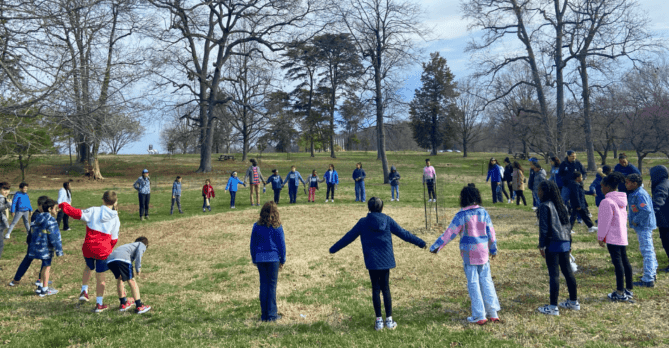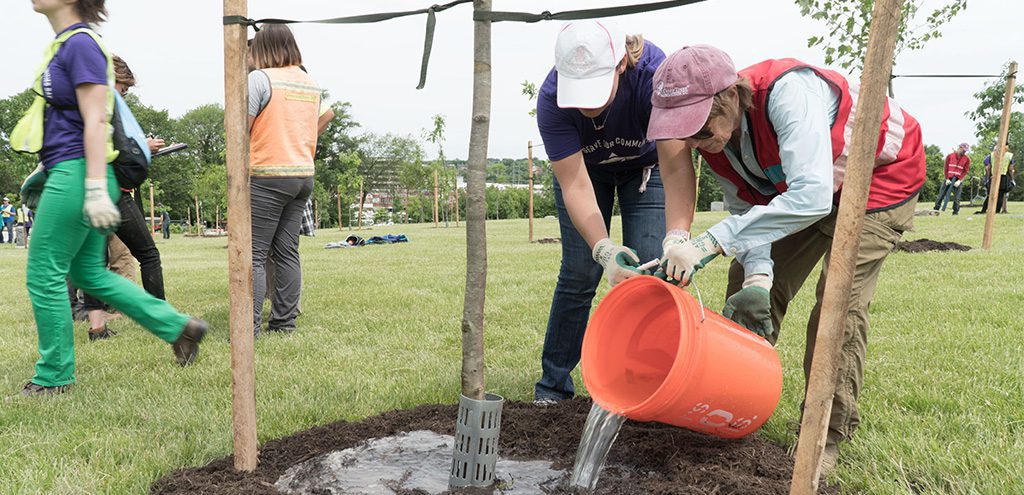
As summer temperatures soar, it’s crucial to give your trees and garden the care they need to thrive. Here at Casey Trees, we’ve compiled a list of essential summer care tips to ensure your greenery remains healthy and vibrant through the hottest months.
- Watering Your Trees
Proper watering is vital for tree health, especially during the summer when heat stress is at its peak. Remember to water! Young trees need approximately an inch and a half of rain each week (equal to 25 gallons of water) to properly establish. When it doesn’t rain for weeks on end, that means trees are all the more desperate for water.
Here are a few simple tips to get your trees ready for the hot summer months:
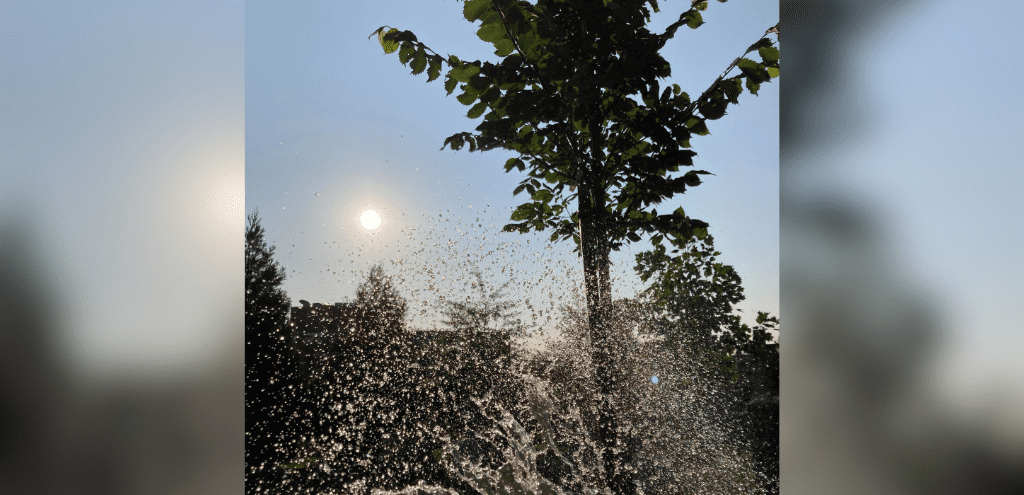 For newly planted trees (planted one – three years ago):
For newly planted trees (planted one – three years ago):
- Prioritize Watering: Focus on trees in areas with limited soil, such as street trees and those near concrete and curbs.
- Water Slowly: When the ground is hard and dry, water will run off if too much is applied too quickly. Place a hose a foot or so from the base of the tree and turn it on to a trickle. Let it run for an hour or two (or more), occasionally moving the hose nozzle to provide water to the entire root zone. Alternatively, use a small sprinkler head on low or a five-gallon bucket with holes in the bottom to water slowly.
- Mulch Ring: Create a mulch ring around the tree following the 3-3-3 rule: 3 inches deep, in a 3-foot radius, leaving a 3-inch space around the trunk. Mulch helps retain soil moisture by slowing evaporation.
- Regular Watering: After saturating the soil, repeat every 3-4 days. If unsure about when to water again, check our Watering Alerts.
For established trees:
- During a drought or dry spell, all trees can use some water, especially street trees. Letting a hose drip onto the roots for a few hours will be a big help. Move the hose nozzle around every hour or so to water the entire area.
For more information on how and when to water your trees, check out our Watering Alert page for photo and video resources!
- Mulching
Mulch seems like an aesthetic afterthought, but it is a crucial part of tree care and an issue of surprisingly growing concern for all tree care-takers.
When applied properly, mulch can greatly benefit your trees by:
- Controlling weeds and grass
- Maintaining moisture in the soil and keeping your tree hydrated
- Protecting the roots and trunk from mowers and other lawn maintenance tools
Unfortunately, poor mulching techniques – namely the “mulch volcano” – have recently been popping up all over the District. Improper mulching techniques can lead to rotted roots, dead bark tissue, insect problems, and imbalances in the soil’s pH levels. Here are a few simple tips to keep in mind when mulching your tree:
- Use Organic Mulch: While inorganic mulch is sometimes useful for soil protection, organic materials are best when mulching trees. Shredded bark, leaf compost, and composted wood chips all work well.
- Remember the 3-3-3 Rule: Create a ring of mulch around your tree, 3 inches deep in a 3-foot radius from the trunk, making sure to leave a 3-inch space right around the tree trunk.
- Avoid Volcanoes: Don’t pile the mulch against the trunk of your tree. When you’re finished, the mulch should look more like a doughnut than a volcano.
- Weeding
Weeds compete with your trees and garden plants for nutrients, water, and sunlight. Regularly weed and inspect your garden to remove weeds by hand or with a hoe. Pull them out by the roots to prevent regrowth.
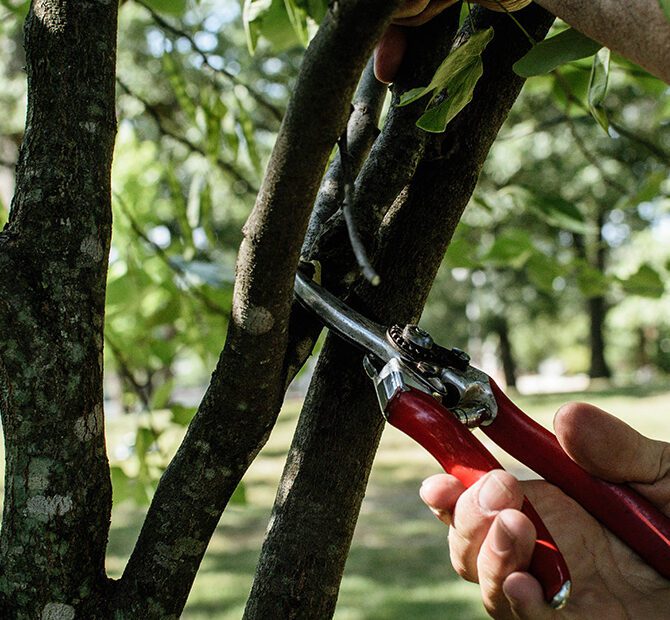 Pruning and Maintenance
Pruning and Maintenance
Proper pruning helps maintain tree structure, removes dead or diseased wood, and encourages healthy growth.
- Summer Pruning: Prune dead, damaged, or diseased branches during the summer to prevent the spread of pests and diseases. Avoid heavy pruning, as it can stress the tree.
- Inspect for Pests and Diseases: Regularly check your trees for signs of pests or diseases. Early detection and treatment can prevent serious damage.
- Garden Care
Your entire garden needs attention during the summer. Here are a few additional tips:
- Soil Health: Test your soil and amend it with compost or organic fertilizers to maintain nutrient levels.
- Hydrate Wisely: Group plants with similar water needs together and use efficient irrigation systems like drip irrigation to minimize water waste.
- Shade Protection: Consider providing temporary shade for sensitive plants during the peak heat of the day using shade cloth or strategically placed umbrellas.
By following these summer care tips, you can help ensure that your trees and garden not only survive but thrive throughout the hottest months of the year. Remember, a little extra attention now can lead to a lush, healthy landscape that you can enjoy all year round.
Your trees and garden will appreciate the TLC – Together, we can keep our urban forest strong and beautiful!
